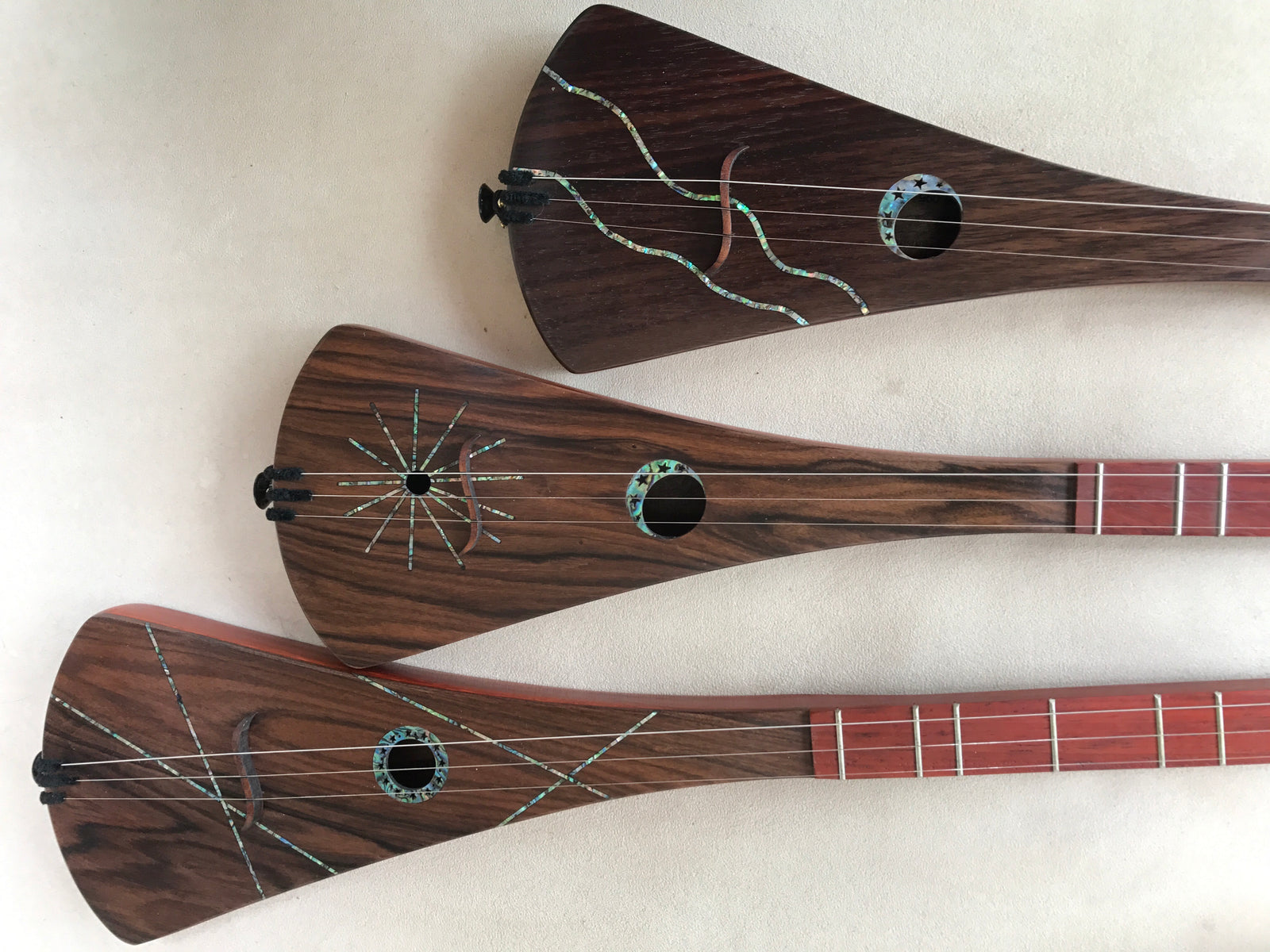The two primary Strumstick keys are D (with the D Strumsticks) and G (with the G Strumsticks). What if I want to sing in a different key than D or G, or play along with others in a different key?
So what is a key anyway?
At the very simplest: Notes are used in certain groups to make songs, and a Key is a name of a certain group. There are 12 different note names; each key is a group of 7 of them.
ex. Key of C uses notes C, D, E and 4 more;
Key of A uses A, B, C# and 4 more.
NEW! See Videos on Playing Strumstick in Many Keys page
Using Re-tunings and/or Capo
Major and Minor keys and Blues Scale keys
NEW! See Master Keys Chart for D Strumstick
Using Re-tunings and/or Capo
Major and Minor keys A,Bb,B,C,C#,D,Ec,E,F,F#,G,Ab
Blues Scale keys A,C#,D,Ec,E,F,F#,G,A
There are several ways to play a Strumstick in another key than its primary one.
A. Retuning to a new key: See Alternate Tunings page.
B. Using a capo to raise the pitch of the Strumstick: See Capo Use page.
C. Combining Retuning and Capo use.
One example: Capo at 3rd fret shifts D Strumstick to key of G.
If you had retuned the Strumstick to key of C ( C, F, C tuning), capo at 3rd fret gives Key of F. There are very many possible combinations.
D. Using Chords from the Desired key found on the Strumstick in its primary tuning.
The Strumstick has an extra fret (number 6) in addition to the major scale frets. This adds some useful notes, and also allows the Strumstick to play chords in a second key from its primary key.
The D Strumstick can also play basic chords in key of G also.
Some Key of G chords found on D Strumstick: G, C, D, Em, Am, Bm
The G Strumstick can play chords in key of C also.
Some Key of C chords found on G Strumstick: C, F, G, Am, Dm, Em
See Chord Diagrams page for chord fingerings
NEW! See the Free Chord Clock Key Changer page to change Chords from one key to another

This diagram shows the 10 most common chords in 12 different keys. if you put your cursor on one Group and point to another group with a finger, the chords in the Fingergroup are in the same relationship to each other as the chords in the Cursor group.
Example: You have a song you found in a book or on the internet with a lot of F, C, Bb chords, maybe some Dm chords. Looking at the diagram chord groups, key of F (on right side) has those chords in it, in fact they are top row and second row chords. Song is most likely in Key of F.
Put your Cursor on the F group. Now point with a Finger to the D group on top. See how D is in the same relative position as F is? And G in the D group is in the same position as the Bb in the F group?
We can "transpose" the Key of F chords (F, C, Bb, Dm) to Key of D chords by comparing positions, and come up with D, A, G, Bm
F = D
C = A
Bb = G
Dm = Bm
So you can play the song by using D where song said F, and Bm where song said Dm, etc. Transposing means changing the chords in one key to the equivalent ( same relationship) chords in another key.
This is how the Free Chord Clock works, with pointers instead of Finger and Cursor, but it works exactly the same way.
Sales, New Products, Instructions, Videos, and Free Offers, Useful Content.
